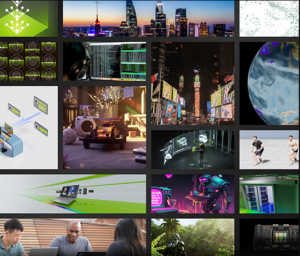Future of Generative AI
How Generative AI Works
Generative AI models are primarily built on neural networks, particularly deep learning architectures like Generative Adversarial Networks (GANs) and Variational Autoencoders (VAEs). These models learn from large datasets and generate new data that shares similar characteristics to the training data. Here’s a closer look at the two main types of generative AI models:
Generative Adversarial Networks (GANs)
GANs consist of two neural networks: a generator and a discriminator. The generator creates new data samples, while the discriminator evaluates them against real data. The generator aims to produce data indistinguishable from real data, while the discriminator strives to differentiate between the real and generated data. Through this adversarial process, the generator improves its ability to create realistic data over time.
Variational Autoencoders (VAEs)
VAEs are designed to encode data into a latent space and then decode it back to generate new data. They work by compressing input data into a lower-dimensional representation and then reconstructing it, allowing the generation of new data samples that are similar to the original input.
Applications of Generative AI
Generative AI has a wide range of applications, transforming industries and enabling new possibilities. Here are some notable examples:
Content Creation
Generative AI is revolutionizing content creation by automating the generation of text, images, and videos. For instance, AI-powered tools can write articles, create digital art, and produce realistic video content, significantly reducing the time and effort required for creative tasks.
Design and Architecture
In design and architecture, generative AI helps in creating innovative designs and structures. AI algorithms can generate numerous design variations, optimize structural elements, and even create personalized designs based on user preferences.
Healthcare
Generative AI is making strides in healthcare by assisting in drug discovery, medical imaging, and personalized treatment plans. AI models can generate potential drug compounds, enhance medical images for better diagnosis, and tailor treatment plans to individual patients.
Music and Art
Artists and musicians are leveraging generative AI to compose music, create digital artworks, and explore new artistic styles. AI-generated music can inspire human composers, while AI art tools enable the creation of unique and complex artworks.
Challenges and Ethical Considerations
Despite its potential, generative AI also poses several challenges and ethical concerns. These include:
Quality and Reliability
Ensuring the quality and reliability of AI-generated content can be challenging. Generative models may produce biased or inaccurate outputs if trained on biased or incomplete data.
Intellectual Property
The use of generative AI raises questions about intellectual property and ownership of AI-generated content. Determining who owns the rights to AI-created works can be complex and requires clear legal frameworks.
Ethical Use
There are ethical considerations related to the misuse of generative AI, such as deepfakes and misinformation. It’s crucial to develop and enforce guidelines to prevent the malicious use of AI-generated content.
Generative AI represents a significant leap forward in the field of artificial intelligence, offering unprecedented capabilities for creating and innovating. By understanding its workings, applications, and challenges, we can harness the power of generative AI to drive progress and address some of the most pressing issues in our world.
Generative AI is not just a tool for automation but a catalyst for human creativity and innovation, opening new horizons for what is possible in the digital age.





